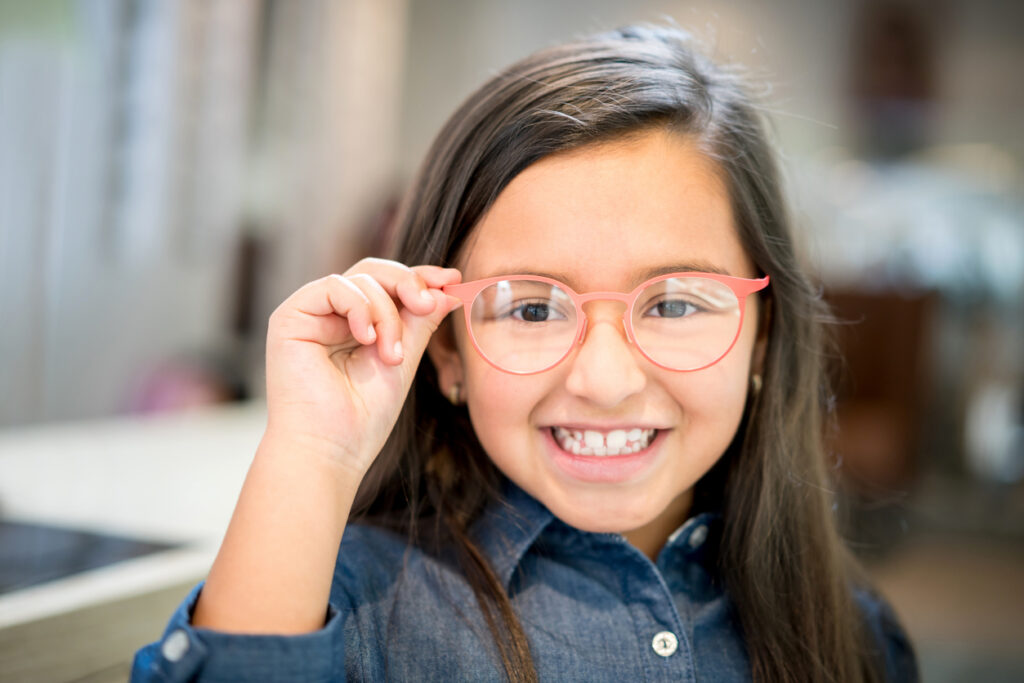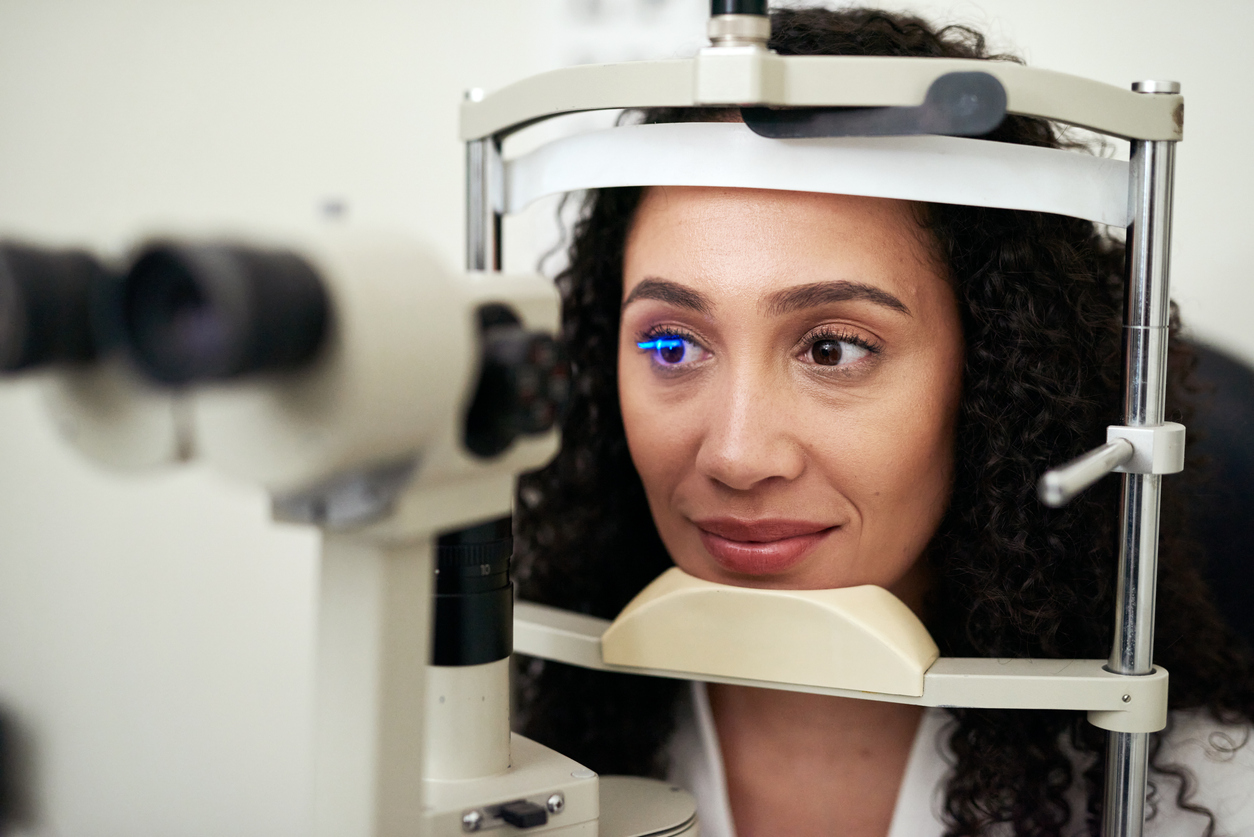You use your eyes on a daily basis for every aspect of your life. They…
Understanding the Most Common Eye Conditions in Children: A Guide for Parents
As a parent, your little one’s health and well-being are your number one priority. A child’s eyes are still developing, which makes them susceptible to common eye conditions in children that can impact their vision and development.
In this article, we will outline the most common eye conditions in children, their symptoms, and the importance of regular eye exams.
Why Eye Health is Crucial for Children
Children rely heavily on their vision for learning and exploring the world around them. Undiagnosed and untreated eye conditions can lead to difficulties in school, poor hand-eye coordination, and other developmental issues.
Early detection and treatment of eye problems in children is a necessity so your youngster can excel without struggling to see.
Common Eye Conditions in Children
Below are a few of the most common eye conditions in children:
Refraction Errors
Refractive errors are among the most common eye conditions in children. These occur when the eye cannot focus light correctly on the retina, leading to blurred vision.
The main types of refractive errors include:
- Myopia (Nearsightedness): Children with myopia can see close objects clearly but struggle with distant objects.
- Hyperopia (Farsightedness): Hyperopia causes distant objects to appear clearer than close ones, but in severe cases, both near and far objects can be blurry.
- Astigmatism: This condition results from an irregularly shaped cornea, causing distorted or blurred vision at all distances.
Depending on the condition, common treatments include:
 Eyeglasses: Glasses correct the focus of light on the retina, improving distance vision.
Eyeglasses: Glasses correct the focus of light on the retina, improving distance vision.- Contact Lenses: Suitable for older children and teenagers who can handle the responsibility of wearing and caring for them.
- Orthokeratology (Ortho-K): Specially designed contact lenses worn overnight to reshape the cornea temporarily, allowing clear vision during the day without glasses or contacts.
- MiSight Contact Lenses: FDA-approved daily wear contact lenses for children that can slow the progression of myopia.
- Atropine Eye Drops: Low-dose atropine drops can be used to slow the progression of myopia in children.
- Observation: With some conditions, regular monitoring by an eye doctor is all that is needed to manage the condition and, in time, the child might grow out of it.
- Refractive Surgery: Generally not recommended for children as their eyes are still developing. However, it may be considered for severe cases when the child is older.
Regular eye exams and early detection are a necessity for managing these conditions effectively and preventing complications that can affect a child’s learning and development.
Strabismus (Crossed Eyes)
Strabismus, commonly known as crossed eyes, occurs when the eyes do not align properly. One eye may turn in, out, up, or down while the other eye remains focused. The eye misalignment can lead to double vision. Left untreated, crossed eyes may cause amblyopia (lazy eye).
Treatment options include glasses, eye patches, and sometimes surgery.
Amblyopia (Lazy Eye)
Amblyopia develops when one eye becomes weaker than the other, leading the brain to favor the stronger eye. This condition can result from strabismus, refractive errors, or other eye conditions.
Early intervention is crucial to treat a lazy eye is a necessity. Left untreated amblyopia can result in permanent vision loss in the affected eye.
Treatment typically involves glasses, eye patches, or vision therapy.
Pediatric Cataracts
Cataracts are often associated with older adults, but children can also develop them. Pediatric cataracts cause the lens of the eye to become cloudy, leading to blurred vision or vision loss.
Pediatric cataracts can be congenital (present at birth) or develop later.
Surgery is usually required to remove the cataract, followed by corrective lenses or other treatments to restore vision.
Conjunctivitis (Pink Eye)
Conjunctivitis, commonly known as pink eye, is an inflammation of the conjunctiva, the thin layer covering the white part of the eye and the inside of the eyelids. It can be caused by infections (bacterial or viral), allergies, or irritants.
Pink eye is common in children.
Symptoms include redness, itching, discharge, and tearing.
Treatment depends on the cause but may involve antibiotics for bacterial infections or antihistamines for allergic conjunctivitis.
Retinopathy of Prematurity (ROP)
ROP primarily affects premature infants and occurs when abnormal blood vessels grow in the retina. This condition can range from mild to severe. In extreme cases, it may lead to blindness.
Regular eye exams for premature infants are crucial for early detection and treatment, which may include laser therapy or surgery.
Eye Injuries
Children love to play. They are naturally active and curious. This natural behavior makes them prone to eye injuries from falls, sports, or other accidents.
Common injuries include scratches on the cornea, foreign objects in the eye, and blunt trauma.
If your child suffers an eye injury, then Immediate medical attention is essential to prevent long-term damage.
Recognizing Symptoms of Eye Problems in Children
Early detection of eye conditions can significantly improve treatment outcomes.
You should watch for the following signs and symptoms that may indicate an eye problem in your child:
- Frequent eye rubbing
- Excessive blinking
- Squinting or tilting the head to see better
- Headaches
- Eye pain
- Difficulty reading
- One eye turning in or out
- Sensitivity to light
- Watery eyes,
- Red eyes
- Drooping eyelids
If you notice any of these symptoms, schedule an eye exam for your child as soon as possible.
Importance of Regular Eye Exams
Regular eye exams are vital for detecting eye conditions early before they become a problem, in fact, an eye exam can catch eye problems even before symptoms appear.
The American Optometric Association recommends that children have their first comprehensive eye exam at six months of age. They should then undergo additional exams at age three and before starting school.
After your child starts school, they should undergo annual or biennial exams, depending on the child’s eye health needs.
How Andover & Winfield Family Optometry Can Help
Andover & Winfield Family Optometry, located in Butler and Cowley counties, specializes in comprehensive eye care for patients of all ages. Their experienced optometrists, Dr. Boswell and Dr. Lindenman are dedicated to providing personalized care and treatment for various eye conditions.
The clinics offer:
- Comprehensive eye exams
- Diagnosis and treatment of eye conditions
- Prescription glasses and contact lenses
- Vision therapy
- Pediatric eye care
Their family-oriented practice ensures that your child’s eye health is in good hands, providing a welcoming and compassionate environment for all patients of all ages.
Understanding common eye conditions in children and recognizing the signs of eye problems is a necessity to ensure a child’s vision and overall development. Regular eye exams play an important role in early detection and treatment, helping to prevent long-term complications.
Trusting your child’s eye care to experienced professionals, like those at Andover & Winfield Family Optometry, gives you peace of mind and ensures your child’s eyes are healthy and functional.
Schedule an eye exam today and take the first step towards protecting your child’s vision for the future.



